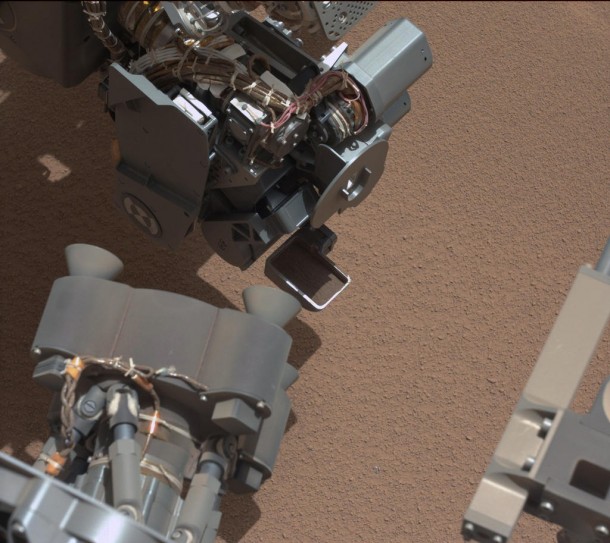
NASA’s Swift satellite recently detected a growing flow of high-energy X-rays from somewhere near the center of our galaxy. The outburst, pictured in this illustration, was produced by a rare X-ray nova and announced the presence of a previously unknown stellar-mass black hole. (Image: NASA)

A school of Kokanee Salmon returns to the streams from which they were hatched. There, they select a mate, spawn and die. As the salmon make their annual fall migration, both sexes turn from their usual silver/blue color to a brilliant red. (Photo: United States Forest Service)

This image from the right Mast Camera (Mastcam) of NASA’s Mars rover Curiosity shows sand and dust lifted by the rover’s first use of the scoop on its robotic arm. (Photo: NASA)

A 700kg crocodile called Rex calmly waits just beneath the water’s surface for some food after coming out of a three-month hibernation at the Wild Life Sydney Zoo in Sydney, Australia. (Photo: AP)

No, these aren’t miniature UFOs. The tiny cube-shaped satellites were released into space from the International Space Station’s Kibo laboratory. One of these little CubeSats was developed by student interns at San Jose State University and will be used for a communications experiment (Photo: NASA)

The interior of the neutrino detector at Daya Bay in the People’s Republic of China, where a multi-national team of researchers from China, the United States, Taiwan, and the Czech Republic are studying neutrino oscillations. Neutrinos are electrically neutral elementary subatomic particles that can travel through great distances of matter without being affected by it. (Photo: Lawrence Berkeley National Laboratory)

This combined image from NASA is of the Helix Nebula, which has also been called the “Eye of God.” At the nebula’s heart is a dying star. In its death throes, the star’s outer layers unravel into space and are set aglow by powerful ultraviolet radiation pumped out by its hot stellar core. (Photo: NASA)























Comments are closed.